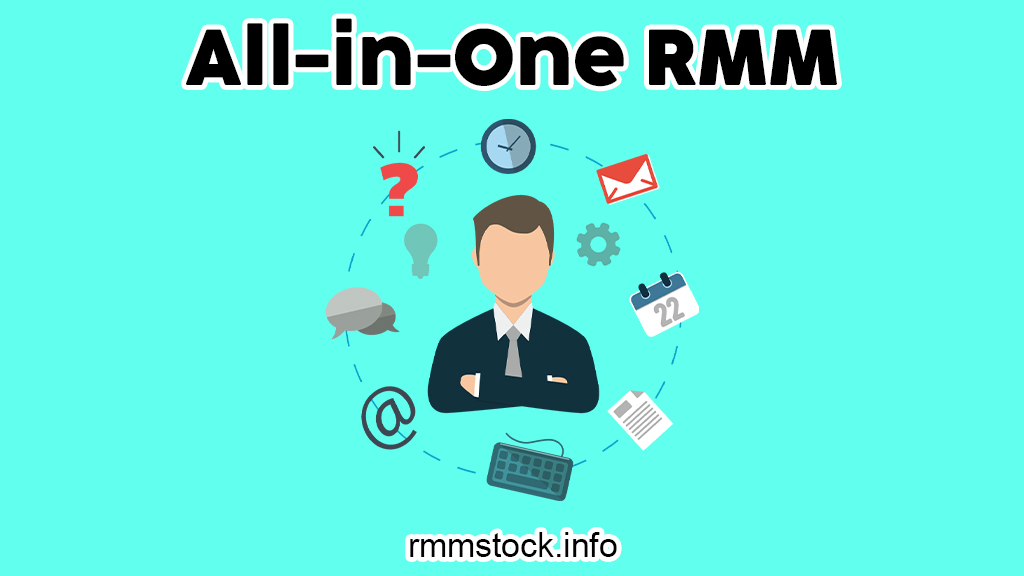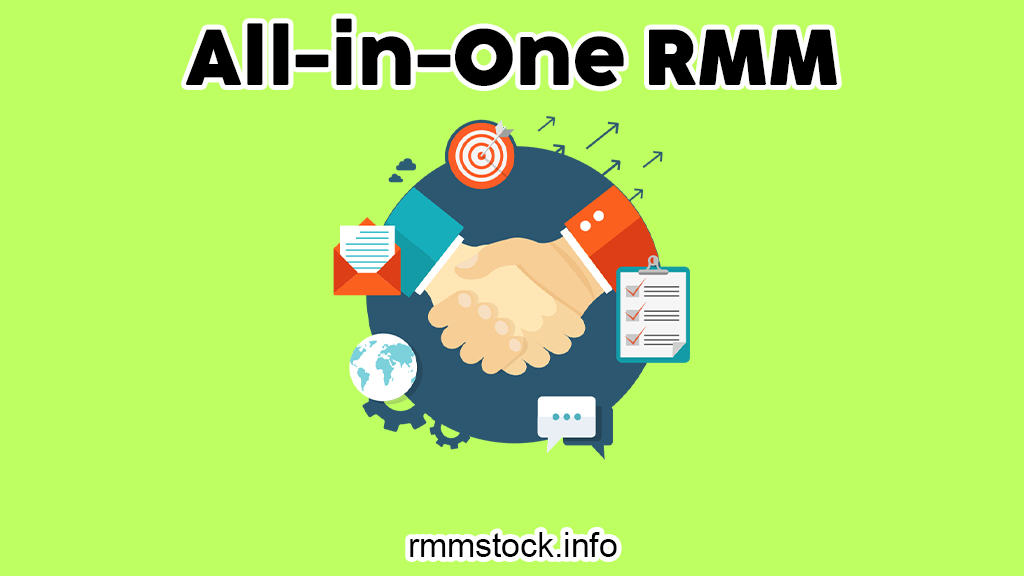As businesses grapple with the complexities of modern technology, the quest for streamlined solutions has never been more critical. Enter the All-in-One Remote Monitoring and Management (RMM) solutions—a transformative tool that promises to redefine the way we approach IT management.
Imagine a single platform that consolidates your monitoring, management, and automation needs into one seamless interface. This is not just a futuristic vision but a present-day reality, designed to tackle the inefficiencies of traditional IT management approaches.
All-in-One RMM solutions are emerging as game changers, offering a unified view that enhances operational efficiency, slashes costs, and elevates performance to new heights.
As we delve deeper into this revolutionary technology, we’ll explore how it can simplify complex IT environments, protect against evolving security threats, and provide a scalable framework that grows with your business. So, buckle up and join us on this journey through the cutting-edge world of All-in-One RMM solutions.
What Is All-in-One RMM?
All-in-One Remote Monitoring and Management (RMM) solution is a comprehensive toolkit designed to streamline IT operations by integrating various management functionalities into a single, cohesive system.
Traditionally, IT departments have juggled multiple software applications to handle different aspects of their infrastructure—monitoring networks, managing devices, securing systems, and automating routine tasks. This patchwork approach often results in inefficiencies, higher operational costs, and a greater risk of errors due to the need to switch between disparate tools and interfaces.
All-in-One RMM platforms aim to address these challenges by consolidating these diverse functions into one unified interface. This centralization allows IT professionals to oversee and control their entire IT ecosystem from a single vantage point.
Whether it’s network monitoring, endpoint management, or system automation, these platforms are designed to cover a wide array of IT needs, ensuring that everything from performance tracking to issue resolution is handled seamlessly.
Key Features and Benefits

1. Unified Dashboard
One of the standout features of All-in-One RMM solutions is their unified dashboard. This central hub acts as a command center for IT operations, offering a comprehensive view of all activities across the network. Instead of having to navigate through various software and interfaces, IT administrators can access performance metrics, system statuses, and critical alerts from a single screen. This not only streamlines management but also enhances decision-making by providing a holistic perspective on the IT infrastructure.
2. Proactive Monitoring and Alerts
All-in-One RMM platforms excel in providing real-time monitoring and automated alerting capabilities. By continuously surveilling the IT environment, these solutions can identify potential issues before they escalate into major problems. Automated alerts ensure that IT teams are notified immediately of any anomalies or performance degradations, enabling them to address issues proactively. This approach not only minimizes downtime but also maintains the overall health and efficiency of the IT systems, leading to a more seamless operational experience.
3. Automated Tasks
Automation is a fundamental element of All-in-One RMM solutions. Routine IT tasks such as software updates, system backups, and patch management can be automated and scheduled according to predefined parameters. This automation reduces the manual workload on IT staff, minimizes human error, and ensures that critical maintenance tasks are performed consistently. By automating these routine processes, IT professionals can redirect their focus to more strategic initiatives, enhancing productivity and innovation within the organization.
4. Enhanced Security
In an era where cybersecurity threats are becoming increasingly sophisticated, robust security features are essential. All-in-One RMM solutions are equipped with advanced security functionalities designed to protect IT environments from a wide range of threats. These include real-time threat detection, vulnerability management, and compliance monitoring. By integrating these security measures into a single platform, businesses can better safeguard their systems, ensure regulatory compliance, and mitigate risks associated with data breaches and cyberattacks.
5. Scalability
As organizations grow and their IT needs evolve, the scalability of their management tools becomes crucial. All-in-One RMM platforms are designed to scale seamlessly with expanding infrastructures and increasing workloads. Whether a business is adding new devices, expanding its network, or integrating new technologies, these platforms can accommodate growth without compromising performance or efficiency. This scalability ensures that IT management remains effective and responsive, even as the complexity of the IT environment increases.
6. Cost Efficiency
One of the most compelling advantages of All-in-One RMM solutions is their cost efficiency. By consolidating multiple IT management tools into a single platform, businesses can significantly reduce their software expenses and simplify vendor management. The integration of various functionalities into one solution not only cuts down on the need for multiple licenses and subscriptions but also streamlines support and training efforts. The economies of scale achieved through this consolidation often result in substantial cost savings, making All-in-One RMM solutions a financially savvy choice for businesses seeking to optimize their IT operations.
Real-World Applications
Organizations across various sectors are harnessing the power of All-in-One RMM solutions to optimize their IT operations. Here are some specific applications:
- Managed Service Providers (MSPs):
- Network Monitoring: MSPs use All-in-One RMM platforms to continuously monitor client networks, detecting and resolving issues before they impact operations.
- Remote Support: These solutions enable MSPs to provide remote assistance, troubleshoot problems, and resolve technical issues without needing physical access to client systems.
- Data Protection: MSPs leverage RMM platforms for automated backups, data recovery, and disaster recovery solutions, ensuring clients’ data is secure and recoverable.
- Corporate Enterprises:
- Seamless IT Operations: Enterprises utilize All-in-One RMM solutions to manage their entire IT infrastructure from a single interface, ensuring smooth and efficient operations.
- Productivity Enhancement: By automating routine tasks and optimizing system performance, these platforms help businesses increase overall productivity and operational efficiency.
- Competitive Edge: Advanced features of All-in-One RMM solutions help enterprises stay ahead in the market by quickly adapting to technological changes and minimizing IT-related disruptions.
- Educational Institutions:
- IT Management: Schools and universities use All-in-One RMM solutions to manage complex IT environments, including networks, classrooms, and administrative systems.
- System Reliability: These platforms ensure the reliability and availability of critical IT systems, supporting uninterrupted teaching and administrative functions.
- Resource Optimization: Automation and streamlined management help educational institutions optimize their IT resources and reduce administrative overhead.
- Healthcare Facilities:
- Critical System Management: Healthcare providers rely on All-in-One RMM solutions to manage and monitor IT systems that support patient care, electronic health records (EHRs), and medical devices.
- Data Security: Robust security features within RMM platforms help protect sensitive patient data and ensure compliance with healthcare regulations.
- Operational Efficiency: By integrating IT management functions, healthcare facilities can enhance operational efficiency, reduce downtime, and improve patient outcomes.
Challenges and Considerations
Despite the numerous advantages, All-in-One RMM solutions come with their own set of challenges and considerations.
- Implementation is a critical phase that requires meticulous planning and execution. Transitioning to a new RMM system can disrupt existing IT operations if not managed carefully. Businesses need to develop a comprehensive implementation strategy that includes data migration, system integration, and user training to minimize potential disruptions and ensure a smooth transition.
- Alignment with Business Needs is another important factor. Not all All-in-One RMM solutions are created equal; businesses must ensure that the chosen platform aligns with their specific IT requirements and operational goals. This involves evaluating the platform’s features, scalability, and compatibility with existing systems.
- Support and Training are also vital components for successful adoption. Adequate support from the solution provider and thorough training for IT staff are essential to maximize the benefits of the RMM platform. Without proper training and support, the full potential of the RMM solution may not be realized, leading to underutilization or operational inefficiencies.
The Road Ahead
As technology continues its rapid evolution, the landscape of IT management is poised for transformative changes. All-in-One RMM (Remote Monitoring and Management) solutions are at the forefront of this evolution, with significant advancements on the horizon that promise to reshape how IT operations are handled.
1. Enhanced Integration:
- Unified Ecosystems: Future All-in-One RMM solutions are expected to offer even more seamless integration with a broader array of technologies and platforms. This will likely include deeper integrations with cloud services, IoT devices, and emerging technologies, creating a more cohesive and interconnected IT environment.
- Cross-Platform Compatibility: Improved interoperability with various operating systems and third-party applications will enhance the versatility of RMM solutions, making them adaptable to diverse IT ecosystems.
2. Advanced Automation:
- Intelligent Automation: As artificial intelligence and machine learning technologies advance, future RMM solutions will incorporate more sophisticated automation capabilities. This could include predictive maintenance, automated troubleshooting based on AI-driven insights, and dynamic resource allocation tailored to real-time needs.
- Self-Healing Systems: Automation will extend to self-healing capabilities, where systems can detect and resolve issues autonomously without human intervention. This proactive approach will further reduce downtime and operational disruptions.
3. Increased Intelligence:
- Data Analytics and Insights: Future RMM platforms will leverage advanced analytics to provide deeper insights into IT performance and operational trends. Enhanced data analytics will help IT teams make more informed decisions, identify potential risks, and optimize system performance.
- AI-Driven Decision Making: Integrating artificial intelligence into RMM solutions will enable more intelligent decision-making, such as automated response to security threats, predictive analysis of system health, and personalized recommendations for optimizing IT resources.
4. Enhanced Security:
- Advanced Threat Detection: With the rise of sophisticated cyber threats, future RMM solutions will incorporate more advanced security features, including real-time threat intelligence and enhanced anomaly detection capabilities.
- Zero Trust Architecture: The adoption of zero-trust security models within RMM platforms will ensure that security protocols are continuously enforced, regardless of where the user or device is located.
5. Greater Scalability and Flexibility:
- Cloud-Native Solutions: As cloud computing becomes more prevalent, RMM solutions will increasingly be designed as cloud-native platforms. This will enhance scalability, allowing businesses to adjust resources based on demand and rapidly deploy new functionalities.
- Modular Architectures: Future RMM solutions may adopt modular architectures, allowing organizations to customize and scale their IT management capabilities according to their specific needs and growth trajectories.
6. Improved User Experience:
- Intuitive Interfaces: Continued advancements in user interface design will make RMM platforms more intuitive and user-friendly, reducing the learning curve and improving accessibility for IT staff.
- Customizable Dashboards: Enhanced customization options will allow organizations to tailor dashboards and reports to their specific requirements, improving visibility and control over IT operations.
In summary, the future of All-in-One RMM solutions looks promising, with advancements in integration, automation, intelligence, security, scalability, and user experience on the horizon. As these technologies continue to evolve, they will drive greater efficiency and effectiveness in IT management, helping organizations navigate the complexities of the digital age with greater agility and precision.
Conclusion
In conclusion, All-in-One RMM solutions represent a significant leap forward in IT management, offering a streamlined, cost-effective approach to handling complex IT environments. As businesses navigate the ever-changing tech landscape, these platforms will undoubtedly play a pivotal role in shaping the future of IT operations.
